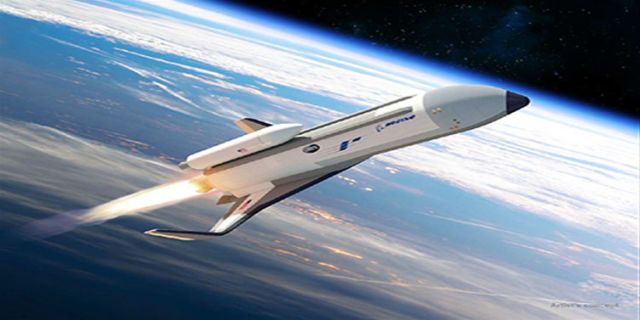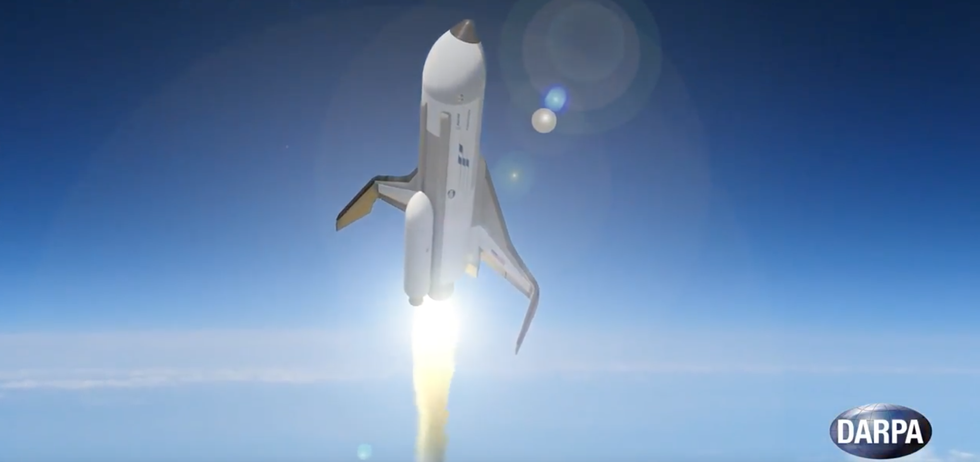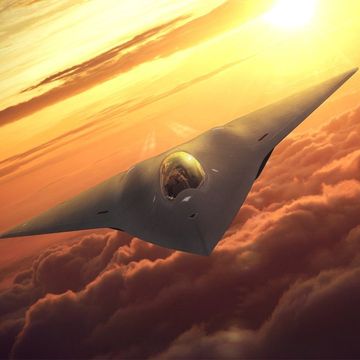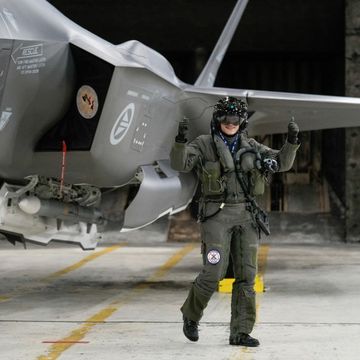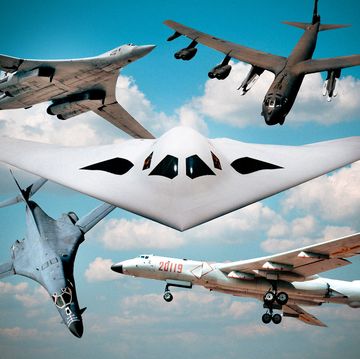DARPA announced today that it has selected Boeing to design and build a new reusable, hypersonic spaceplane called the Phantom Express that would fly into high suborbital altitudes to launch satellites into orbit before coming back down to land horizontally like an airplane.
The unmanned craft, part of the Experimental Spaceplane (XS-1) program, would release a small expendable upper stage rocket after it reaches suborbital altitudes. The upper stage would continue to carry the payload to orbit while the first stage—the spaceplane itself—would bank and return to Earth to land on a runway. DARPA hopes the XS-1 will allow the Department of Defense to launch satellites into low Earth orbit with only a few days' notice, compared to the months it currently takes to plan satellite launches, and that the spaceplane will be capable of landing and relaunching within hours.
"The XS-1 would be neither a traditional airplane nor a conventional launch vehicle but rather a combination of the two, with the goal of lowering launch costs by a factor of ten and replacing today's frustratingly long wait time with launch on demand," said Jess Sponable, DARPA program manager, in a press release. "We're very pleased with Boeing's progress on the XS-1 through Phase 1 of the program and look forward to continuing our close collaboration in this newly funded progression to Phases 2 and 3—fabrication and flight."
Unlike the Air Force's X-37B unmanned spaceplane that launches on top of an Atlas V rocket, the XS-1 will launch vertically on its own internal engines using cryogenic propellants—liquid oxygen and liquid hydrogen. The Phantom Express, roughly the size of a business jet, would fly to hypersonic speeds over Mach 5 to reach high suborbital altitudes before releasing the satellite-launching second stage to carry a payload up to 3,000 pounds the rest of the way to low Earth orbit.
Phase 2 of the Experimental Spaceplane program covers design, construction, and testing of the craft, including 10 test fires of the propulsion system over 10 days to demonstrate the system is robust enough for quick turnaround launches. Phase 2 is expected to last through 2019. Then the defense agency along with Boeing hope to begin flight tests in 2020 during Phase 3. A total of between 12 and 15 test flights are tentatively planned, with the first few conducted as shakedown flights to extensively test the spaceplane. After those initial flights are completed, DARPA wants to launch the XS-1 10 times in 10 days, culminating with a flight carrying the upper-stage satellite delivery system.
If the program is successful, DARPA predicts the XS-1 could operate with costs under $5 million per launch. The XS-1 will make use of Aerojet Rocketdyne AR-22 engines—modified Space Shuttle main engines—composite materials for propellant tanks, autonomous flight control technologies, and hybrid composite-metallic wings and surfaces to withstand the high stress of hypersonic flight and temperatures as high as 2,000º F.
"Phantom Express is designed to disrupt and transform the satellite launch process as we know it today, creating a new, on-demand space-launch capability that can be achieved more affordably and with less risk," said Darryl Davis, president of Boeing Phantom Works, in a press release.
In addition to providing launch services to the military, DARPA plans to share key design specifications for the XS-1 with commercial spaceflight companies. The defense agency stated that it is a goal to facilitate the commercial sector to take advantage of XS-1 technologies to reduce launch costs across the board.
In the next couple years we could see some engine test fires, and then come 2020, if all goes according to plan, the first ship in the Experimental Spaceplane program will take to the skies.
Source: DARPA

Jay Bennett is the associate editor of PopularMechanics.com. He has also written for Smithsonian, Popular Science and Outside Magazine.
